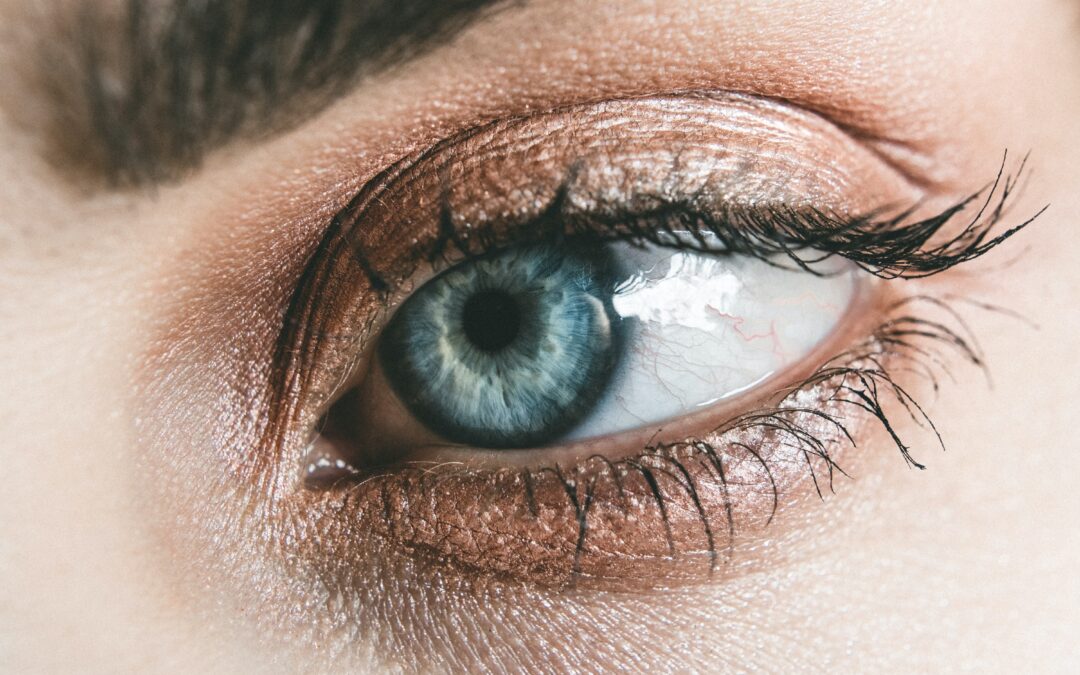Yellow
If a small patch of yellow tissue bulges out of the conjunctiva, this could be a pinguecula, which is caused by UV damage from the sun along with wind or dust damage. These patches sometimes become inflamed and appear red.
If a pinguecula is left untreated, it can turn into pterygium, which is also known as “surfer’s eye.” Pterygium is a larger growth that can extend to the cornea, eventually blocking vision.
If the entire sclera becomes yellow, jaundice may be the problem. Jaundice occurs due to a buildup of old red blood cells called bilirubin, which are filtered out by the liver and turned into bile. Typically, the bile is stored in the gallbladder and excreted by the body. Jaundice occurs when the liver, pancreas, or gallbladder are not functioning properly. Speak to your healthcare provider if you notice your sclera turning yellow.
Brown
Typically, for African Americans, due to high levels of dark brown pigment called melanin, the sclera may have brownish spots, which is harmless. Brown spots can also be a nevus or a freckle on the eye.
Sometimes, brown spots can raise some concerns. Primary acquired melanosis (PAM) is a precancerous condition that begins with a painless flat brown spot on the eye, which is similar to a freckle and slowly changes over time. PAM usually develops in middle-aged people and appears in one eye. If PAM is not treated, it can become cancerous. Have your ophthalmologist examine any new brown sports that develop on your eye.
Red or Pink
Redness in the eye can be due to various injuries or conditions. It is imperative to have your ophthalmologist examine your eyes, specifically if redness comes with blurry vision, pain or discharge.
A bright red spot on the sclera is typically a sign of subconjunctival hemorrhage, wherein a blood vessel that is broken has leaked between the conjunctiva and the sclera under the white of your eye. This is typically harmless and eventually heals on its own.
Bloodshot eyes are due to the dilation of blood vessels in the conjunctiva. They typically happen when you are tired, have dry eyes or allergies, have been exposed to smoke, or have irritation from contact lenses. Bloodshot eyes can also happen due to an eye infection like conjunctivitis (pink eye). Red eyes can also raise more serious eye concerns such as glaucoma or uveitis.

Long-term use of certain medications can give your sclera a blue-gray tint. Certain antibiotics, such as minocycline used to treat rosacea and rheumatoid arthritis can produce this effect. Minocycline can also discolor the skin, ears, teeth, or fingernails, making them appear blue-gray.
The sclera can also thin out and allow the choroid, which is the tissue beneath, to peek through, creating a bluish discoloration. A thin sclera can also develop in people born with osteogenesis imperfecta (brittle bone disease), Marfan’s syndrome (a connective tissue disorder), and in people with anemia or iron deficiency. If you notice any bluish-gray discoloration of the whites of your eyes, speak with your ophthalmologist who can refer you to a specialist if needed.
To learn more about keeping your eyes healthy, click HERE.
Adapted from AAO.org




